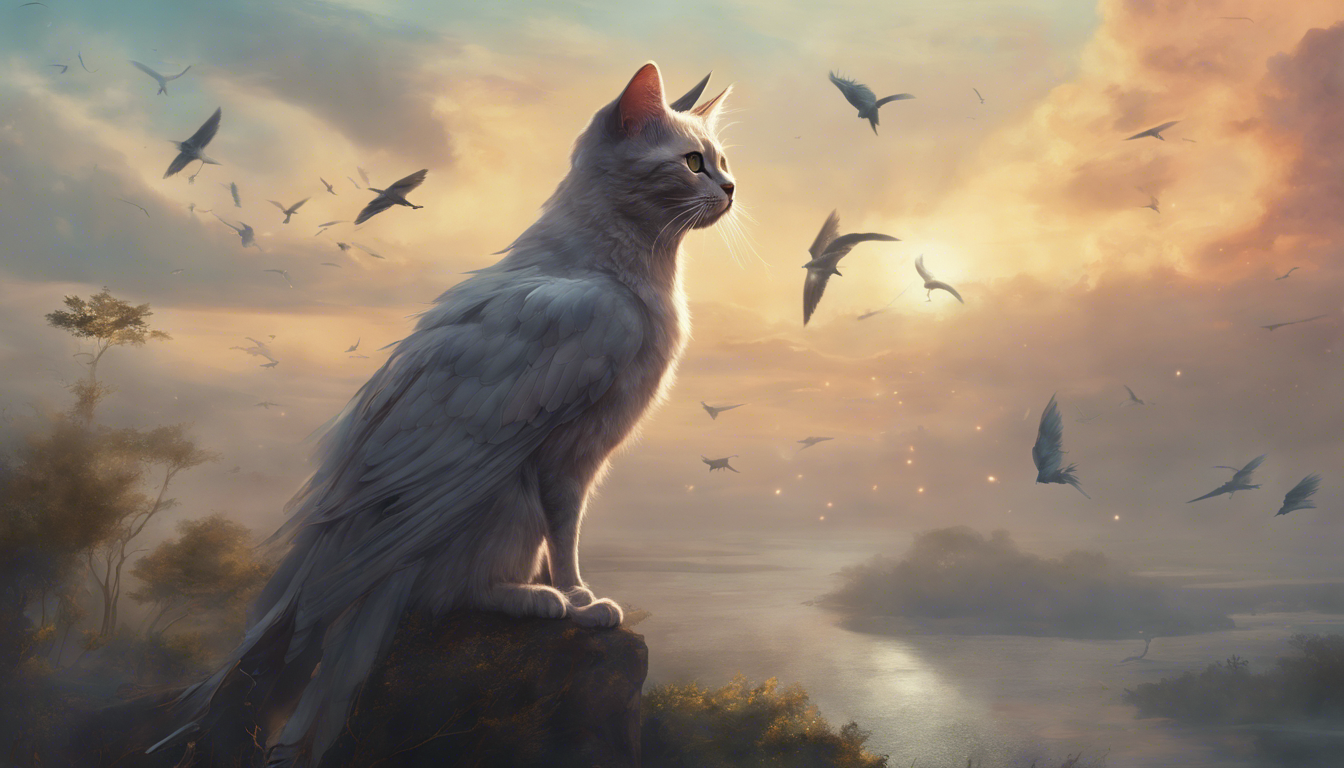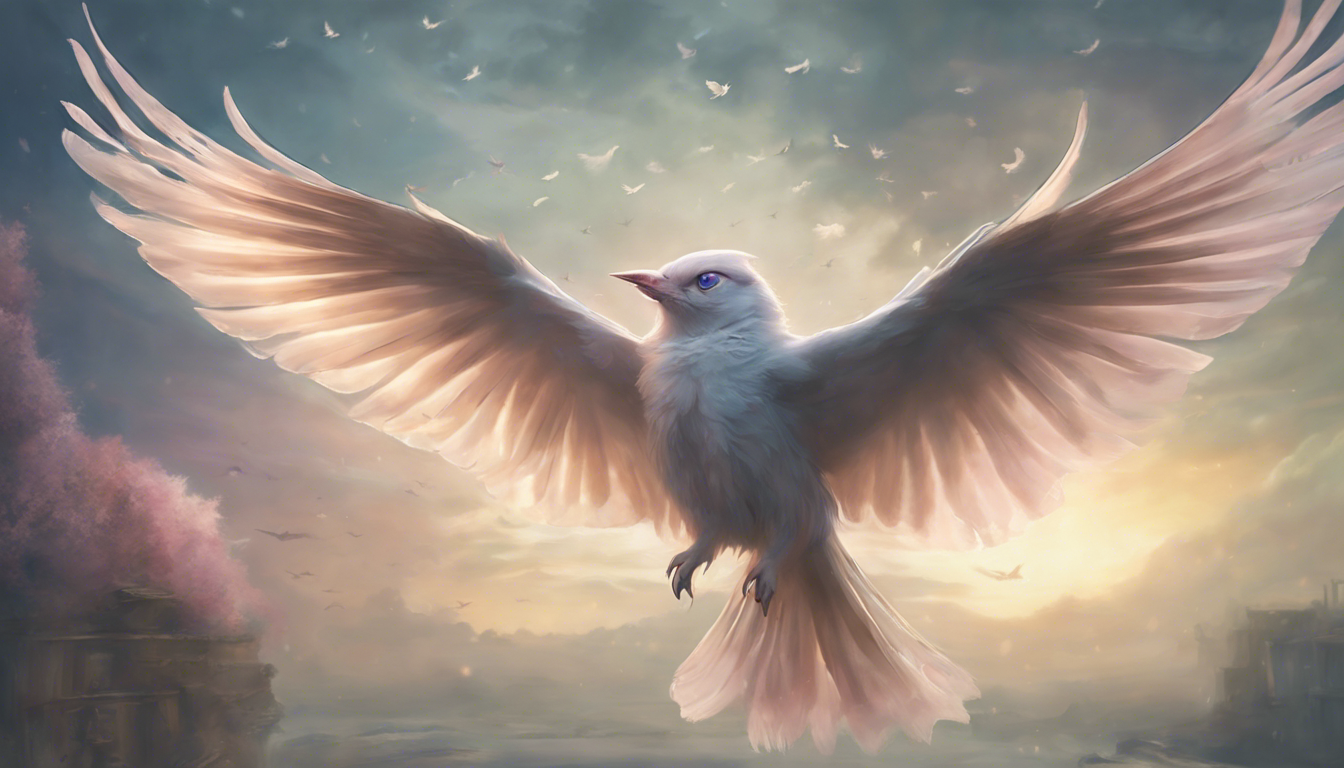Introduction to Cat Birds
What are Cat Birds?
Cat Birds, also known as “Catbird” or “Gray Catbird”, are small-medium sized songbirds belonging to the family Mimidae. They are native to North America and are known for their distinctive and melodious vocalizations. The name “Catbird” is derived from their cat-like calls, which resemble the mewing of a kitten or the purring of a cat.
Appearance
Cat Birds have a gray body with a black cap on their head. They have a long, thin beak, black eyes, and grayish-black legs. The feathers on their body are soft and sleek, giving them a smooth appearance. They have a unique feature called “rufous undertail coverts”, which are rusty colored feathers under their tail.
Habitat
Cat Birds prefer habitats with dense vegetation, such as thickets, shrubs, and forests. They can also be found in gardens, parks, and urban areas with suitable vegetation. They are known to be adaptable and can survive in a variety of habitats as long as there is enough vegetation for nesting and foraging.
Nesting and Breeding
Cat Birds typically build their nests in dense shrubs or bushes, using twigs, grass, and leaves. The female cat bird is responsible for building the nest while the male assists by bringing materials. The female lays 3-5 eggs, which are incubated for about two weeks. Both parents take turns incubating the eggs and feeding the chicks once they hatch.
Feeding
Cat Birds primarily feed on insects, berries, fruits, and seeds. They have a preference for berries and are known to be attracted to fruiting trees and shrubs. They use their beaks to forage for insects in vegetation, flipping leaves to uncover hidden prey. They also consume nectar from flowers and may occasionally visit bird feeders.
Behavior
Cat Birds are known for their playful and curious nature. They are often seen hopping and climbing through branches, exploring their surroundings. They are also territorial and will defend their nesting area from intruders. Cat Birds are vocal and have a wide repertoire of songs, ranging from simple melodies to complex imitations of other bird calls.
Conservation
Cat Birds are not currently listed as endangered or threatened. However, habitat loss due to deforestation and urbanization poses a potential threat to their population. Protecting and preserving their natural habitats, such as maintaining suitable vegetation and creating wildlife-friendly gardens, can help ensure their survival.
In conclusion, Cat Birds are fascinating songbirds known for their distinctive calls and playful behavior. They are adaptable and can be found in various habitats across North America. By understanding their habitat preferences and promoting conservation efforts, we can continue to enjoy the presence of these beautiful birds in our surroundings.
For more information on Cat Birds, visit Audubon Society or Cornell Lab of Ornithology.
Physical Characteristics of Cat Birds

Cat birds, also known as catbird thrushes, are a fascinating species of birds that are known for their unique physical characteristics. These birds are found primarily in North America and are a favorite among birdwatchers and nature enthusiasts. In this article, we will explore the various physical attributes of cat birds and delve into what makes them so intriguing.
Distinctive Plumage
One of the most striking features of cat birds is their distinctive plumage. These birds are primarily gray in color, with a slight bluish tinge to their feathers. This coloring helps them to blend in seamlessly with their surroundings, making them difficult to spot for predators and humans alike. Their feathers have a soft texture, which adds to their overall charm.
Mimicry Abilities
Another interesting physical characteristic of cat birds is their incredible mimicry abilities. They are known for their ability to mimic the sounds of various animals, including cats, hence their name. This mimicry is not only used for communication but also for self-defense. By imitating the sounds of potential predators, cat birds can deter them from approaching their nests or territories.
Slender Body Shape
Cat birds have a slender body shape, with a long tail and a slightly curved bill. Their bodies are built for agility and quick movements, allowing them to navigate through dense foliage with ease. This allows them to find food and build nests in hard-to-reach areas, where other birds may struggle to survive.
Strong Vocalization
One of the most distinctive physical characteristics of cat birds is their strong vocalization. They are known for their melodious songs, which are a combination of various calls and whistles. Their songs can be heard during the breeding season, as males use them to establish territories and attract mates. Each cat bird has its unique song, making it a joy for bird enthusiasts to identify and distinguish individuals.
In conclusion, cat birds are truly remarkable creatures with unique physical characteristics that set them apart from other bird species. From their distinctive plumage to their mimicry abilities and strong vocalization, these birds capture our imagination and intrigue us with their beauty and charm. Next time you’re out in nature, keep an eye and ear out for these enchanting creatures – you never know when you might catch a glimpse of a cat bird in action.
Remember, the key to SEO optimization is to naturally incorporate relevant keywords, such as “physical characteristics of cat birds,” ensuring they are highlighted using the tag to emphasize their importance in the content.
Habitat and Behavior of Cat Birds

Cat birds, also known as the gray catbird, are small, medium-sized birds that are native to North America. They are part of the mimid family and are known for their unique vocal abilities. In this article, we will explore the habitat and behavior of cat birds, shedding light on their intriguing traits and characteristics.
Habitat
Cat birds are primarily found in dense vegetation areas, such as shrubs, thickets, and forests. They prefer habitats that provide ample cover, as they are shy and secretive birds. Their plumage, which is predominantly gray, allows them to blend seamlessly into their surroundings, making them difficult to spot.
These birds are widespread in North America and can be found in various regions, including woodlands, gardens, and suburban areas. They are particularly fond of habitats that offer a diverse range of plant species, as this provides them with a plentiful food source.
Behavior
1. Vocalizations: One of the most distinctive aspects of cat birds is their vocal abilities. They are skilled mimics and can imitate the songs of a wide variety of other bird species. Their melodic calls and songs are often described as cat-like “mewing” sounds, which is where their name originates from. These vocalizations serve to attract mates, establish territories, and communicate with other birds.
2. Feeding Habits: Cat birds have a varied diet that consists of both fruit and insects. They feed on a wide range of berries, including raspberries, blackberries, and elderberries. Their preference for fruit makes them important seed dispersers, aiding in the regeneration of plants. Additionally, they consume insects and larvae, contributing to natural pest control in their habitats.
3. Nesting and Reproduction: Cat birds are monogamous and form long-term pair bonds. The female builds the nest, which is a cup-shaped structure made of twigs, grass, and leaves, typically concealed within dense vegetation. Both parents take turns incubating the eggs and feeding the hatchlings. They usually raise one or two broods per breeding season.
4. Territorial Behavior: Like many bird species, cat birds are territorial. Males defend their territories by singing and displaying aggressive behavior towards intruders. Their territories can range from 0.4 to 1.2 hectares in size and are fiercely guarded during the breeding season.
5. Migration: Cat birds are partially migratory, with populations in the northern parts of their range migrating south for the winter. They travel long distances to reach their wintering grounds, often joining mixed flocks of other migrating bird species.
In conclusion, cat birds are intriguing creatures with fascinating habitat preferences and behaviors. Their choice of dense vegetation habitats, vocal mimicry abilities, diverse diet, and reproductive strategies make them unique and essential components of North America’s ecosystems. So, next time you encounter a gray catbird, take a moment to appreciate the wonders of nature that they embody.
Sources:
– All About Birds – Gray Catbird
– Audubon – Gray Catbird
– National Geographic – Gray Catbird
Importance of Cat Birds in Ecosystems

The Spiritual Importance of Cat Birds in Ecosystems
1. The Significance of Cat Birds in the Natural Balance
Cat birds, also known as Bowerbirds, hold a unique role in maintaining the delicate balance within ecosystems. These fascinating creatures are not only renowned for their enchanting beauty but also for their spiritual significance. In this article, we will explore the importance of cat birds in sustaining the harmony of the natural world.
2. Architects of Nature’s Tapestry
Cat birds, with their meticulous attention to detail, are considered the architects of nature’s tapestry. They play a crucial role in pollination, dispersing seeds, and maintaining the health of ecosystems. Their intricate nests, carefully constructed from branches, leaves, and other found materials, are not just shelter for their young but also provide habitat for countless other organisms.
3. The Dance of Fertility
Cat birds are known for their elaborate courtship rituals, where the males impress potential mates by building intricate bowers and displaying dazzling plumage. These displays are not only mesmerizing to observe but also serve as a symbol of fertility and abundance in the natural world. Their mating rituals contribute to the continuity of various plant and animal species, ensuring the integrity of the ecosystem.
4. The Messenger of Spiritual Balance
In many spiritual traditions, cat birds are seen as messengers of spiritual balance and harmony. Their lyrical songs are believed to carry messages from the divine realm, reminding us to reconnect with nature and restore our own inner balance. Their presence in our lives serves as a gentle reminder to embrace our spiritual path and honor the interconnectedness of all living beings.
5. Guardians of Biodiversity
Cat birds have a profound impact on maintaining biodiversity within ecosystems. As they move from tree to tree, feeding on fruits and insects, they aid in seed dispersal, allowing for the growth of diverse plant species. By promoting biodiversity, cat birds contribute to the overall health and resilience of ecosystems, making them guardians of nature’s intricate web.
Cat birds may seem like ordinary birds at first glance, but their spiritual and ecological significance goes far beyond their charming appearance. Their role as architects, messengers, and guardians within ecosystems highlights the interconnectedness and interdependence of all life forms. As we strive to protect and preserve our natural world, let us not forget the invaluable importance of these remarkable creatures. Embracing and nurturing the presence of cat birds in ecosystems is essential for the well-being of our planet and our own spiritual journeys.
By acknowledging and appreciating the significance of cat birds in ecosystems, we can deepen our connection with nature and cultivate a sense of reverence for the intricate balance of life. Let the enchanting songs and graceful presence of cat birds inspire us to live in harmony with the natural world.


Article written by Dera
Greetings, I am Dera, a 35-year-old individual with a deep passion for spirituality. Through my website, I aim to share my insights and knowledge to help others on their spiritual journey. Join me on the path to inner peace and enlightenment.